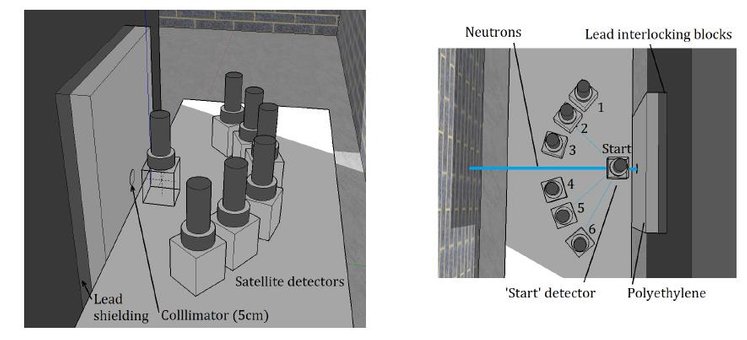Hybrid Instruments Ltd.
Real-Time Analysis
Spectroscopy
Traditionally neutron spectroscopy is defined as being an ill-posed problem because neutrons scatter readily in detection systems. This means that rarely is all of the neutron energy converted to an electrical signal that can be used to infer the neutron’s energy; rather the neutron leaves a proportion of its energy and scatters out of the detector. To obtain an impression of the variation of energy with neutron flux (the spectrum) a set of detector responses (pulse height versus energy) is measured for a variety of mono-energetic neutron fluxes. Then the response of the detector to the field of interest (the field with the unknown spectrum) is measured and its pulse-height response matched stochastically to a combination of the mono-energetic responses. Since a variety of spectral solutions is usually possible the most appropriate physical solution is selected; sometimes the solution is selected with reference to a suspected or ‘seed’ spectrum based on what is known about the environment under scrutiny.
With the Hybrid Instruments Ltd. mixed-field analyser a different approach is possible. The analyser enables events scattering from a first detector that are detected in a second to be discriminated from gamma rays in real time to produce logic pulses synchronised with the respective detections.
The difference between the two detection times yields the energy of the scattering neutron and thus, via a correction for the angle between the detectors, an absolute measurement of the energy can be derived. The distinction of this approach is that whilst time-of-flight measurement is possible with a pulsed accelerator-based source, this approach works with any neutron field since no start pulse is necessary. It is necessary however to correct for scattering from the surroundings and the correlated detection of two neutrons in two separate detectors (especially from fission) which can masquerade as a single, scattered neutron of very high energy.
The detector set-up for time-of-flight spectroscopy measurements,
(personal communication L. Mogg (2016)).

